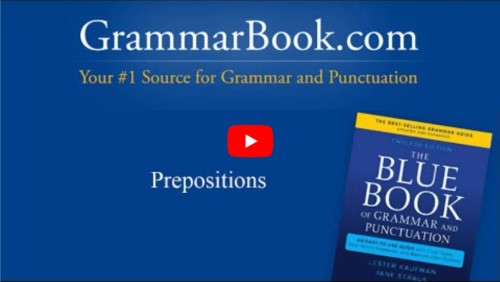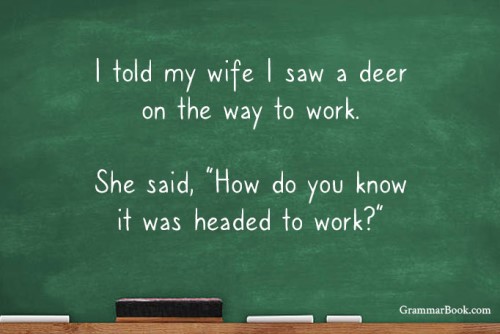|
You may have seen three dots within text when reading a sentence (…). This punctuation mark is called an ellipsis. An ellipsis represents an omission of one or more words within a quoted passage. The plural of ellipsis is ellipses.
The ellipsis serves efficient writing by allowing us to abbreviate content or otherwise include only details we believe are relevant to our audience. We can use an ellipsis in the start, middle, or end of a sentence.
Original: "Looking out among the standing, clapping audience, I realized I was no longer myself: I was the public persona I had invented."
Ellipsis: He became his own judge when he said, "… I realized I was no longer myself: I was the public persona I had invented."
Original: "The happiness of your life depends upon the quality of your thoughts." Marcus Aurelius, Meditations
Ellipsis: "The happiness of your life depends upon … your thoughts." Marcus Aurelius, Meditations
Original: "The budget committee has always said that it lacks the funds to begin the sweeping campaign for the homeless, but I disagree right down to the custom-tailored suit the chairman is wearing."
Ellipsis: According to the secretary, "The budget committee has always said that it lacks the funds to begin the sweeping campaign for the homeless …" |
Note how we use spaces with the ellipsis in each sentence. We include a space on both sides of the mark when it is in the middle of text. When it appears at the start or the end of the sentence, we use a space only before the first typed character (start) or after the last typed character (end). We do not include a space before or after the quotation mark.
(This style is our preference for formal writing. Some publishers may choose to omit the spaces around the mark.)
Knowing the function of the ellipsis helps us understand the ellipsis four-dot method.
When to Use the Ellipsis Four-Dot Method
If a complete sentence or several sentences precede an omission, we will use a period before the three-dot ellipsis mark, resulting in four total dots (periods).
Original Content: "Smart phones have revolutionized the ways in which we interact. Where once we had to visit or call our neighbors to communicate with them, we can now send a text or a direct message through social media. We can also more easily block or avoid them. We can find information for ourselves where once we may have had to consult with experts much more often. We can program our television and our thermostat and even spy on our neighbor using available apps. Yes, we have become a bit smarter and more efficient, but are we any more human?"
Four-Dot Ellipsis: The professor's closing words still lingered well after the lecture had ended: "Smart phones have revolutionized the ways in which we interact. … we can now send a text or a direct message through social media. … We can find information for ourselves where once we may have had to consult with experts much more often. … we have become a bit smarter and more efficient, but are we any more human?" |
Once again note how we apply spacing with our four-dot ellipsis. We include the concluding period at the end of the complete sentence, add a space, insert the ellipsis, and follow it with another space. If the text following the ellipsis is a fragment of the next sentence rather than the start of it, we use a lowercase letter.
Let's look at one more example:
Original Content: Earthquakes do much more than destroy property. They demolish infrastructure as well. People might survive, but what they labored to build often cannot. What follows can include the loss of industries, roads and railways, and public services such as sewer and water. That is only the short term. Over the long term, those must be re-established, which may result in an entire generation's economic loss."
Four-Dot Ellipsis: Earthquakes do much more than destroy property. … People might survive, but what they labored to build often cannot. What follows can include the loss of industries, roads and railways, and public services such as sewer and water. … Over the long term, those must be re-established, which may result in an entire generation's economic loss." |
Ellipsis Four-Dot Method: Other Punctuation Marks
When a complete sentence ends in punctuation other than a period, such as a question mark or an exclamation point, the sequence is word, punctuation mark, space, ellipsis, space.
Original Content: "How many times could Coach Hardy watch Miller slide into second that way? The brawny first baseman swung a big bat and showed hustle on the base path, but he was a season-ending injury waiting to happen. The human body can bend, but bend it enough and it will break! What a season that must have been for Hardy. He did not yet know what we do now: Miller survived his reckless running all the way to the World Series."
Four-Dot Ellipsis: "How many times could Coach Hardy watch Miller slide into second that way? … The human body can bend, but bend it enough and it will break! … He did not yet know what we do now: Miller survived his reckless running all the way to the World Series." |
Related Topic
Ellipses
Ellipsis Marks
What Is an Ellipsis?
|
View and comment on this
article on our website.
|
|
|

|
 |
The Blue Book of Grammar and Punctuation
by Lester Kaufman and Jane Straus |
The Authority on English Grammar! Twelfth Edition Now Available
An indispensable tool for busy professionals, teachers, students, homeschool families, editors, writers, and proofreaders.
Available in print AND as an e-Book! Over 2,000 copies are purchased every month!
To order the book, simply click the link to order the book from the GrammarBook.com website.
|
Free BONUS Quiz for You!
[[firstname]], because you are a subscriber to the newsletter, you get access to one of the Subscribers-Only Quizzes. Click here to take a Who vs. Which vs. That Quiz and get your scores and explanations instantly!
We will be adding many more quizzes this year to our already substantial list of them. If you have suggestions for topics we have not yet covered, please send us a message at help@grammarbook.com.
|
Hundreds of Additional Quizzes
at Your Fingertips
Subscribe now to receive hundreds of additional English usage quizzes not found anywhere else!
Teachers and Employers
Save hours of valuable time! You may assign quizzes to your students and employees and have their scores tallied, organized, and reported to you! Let GrammarBook.com take the hassle out of teaching English!
"Fun to test my skills."
"The explanations really help ... thanks!"
"I can select the quizzes to assign to my students, and then the results are reported to me automatically!"
99¢
QUIZZES
|
Don't need all the quizzes?
You can now purchase the same quizzes individually for ONLY 99¢ each.
Purchase yours here.
|
If you think you have found an error in a quiz, please email us at help@grammarbook.com
|
Wordplay

|
 |
English In A Snap:
68 One-Minute English Usage Videos FREE |
Learn all about who and whom, affect and effect, subjects and verbs, adjectives and adverbs, commas, semicolons, quotation marks, and much more by just sitting back and enjoying these easy-to-follow lessons. Share them with your colleagues (and boss), children, teachers, and friends as well! Click here to watch.
|
|





